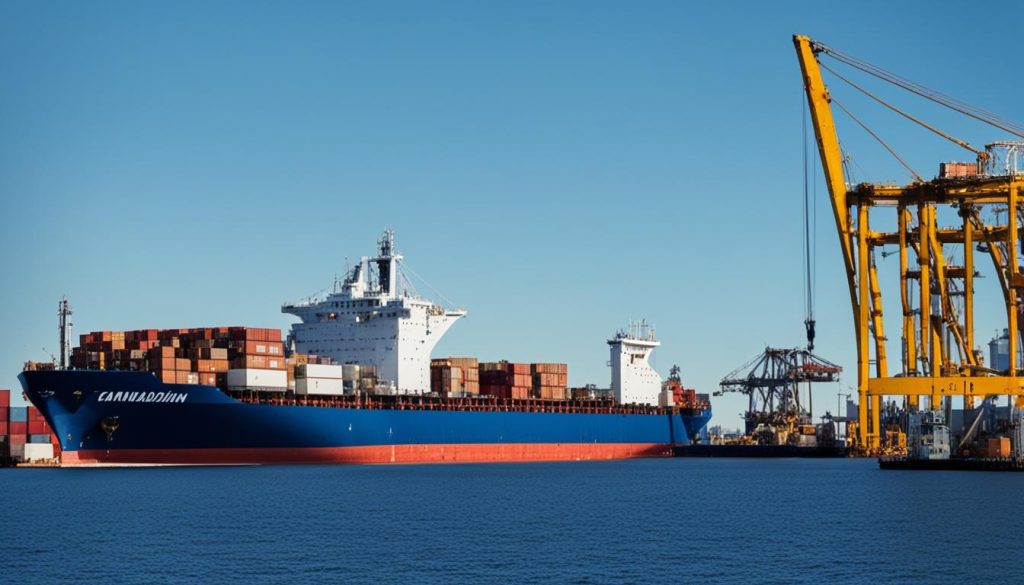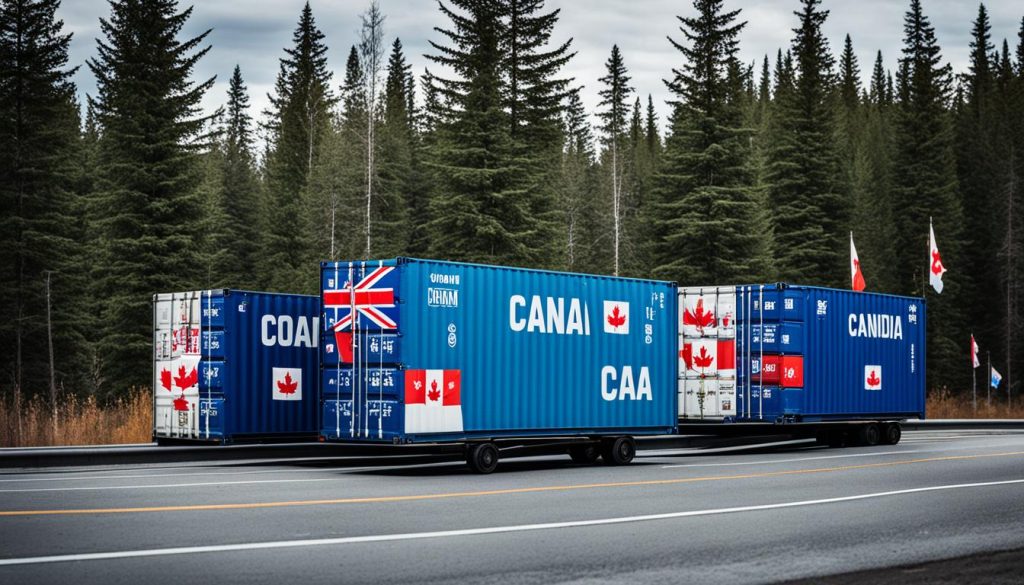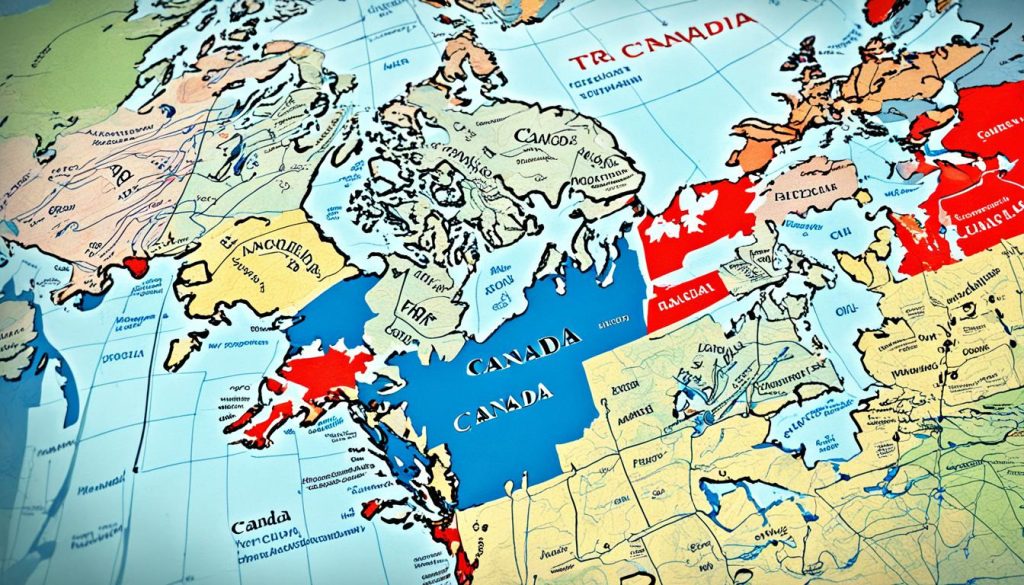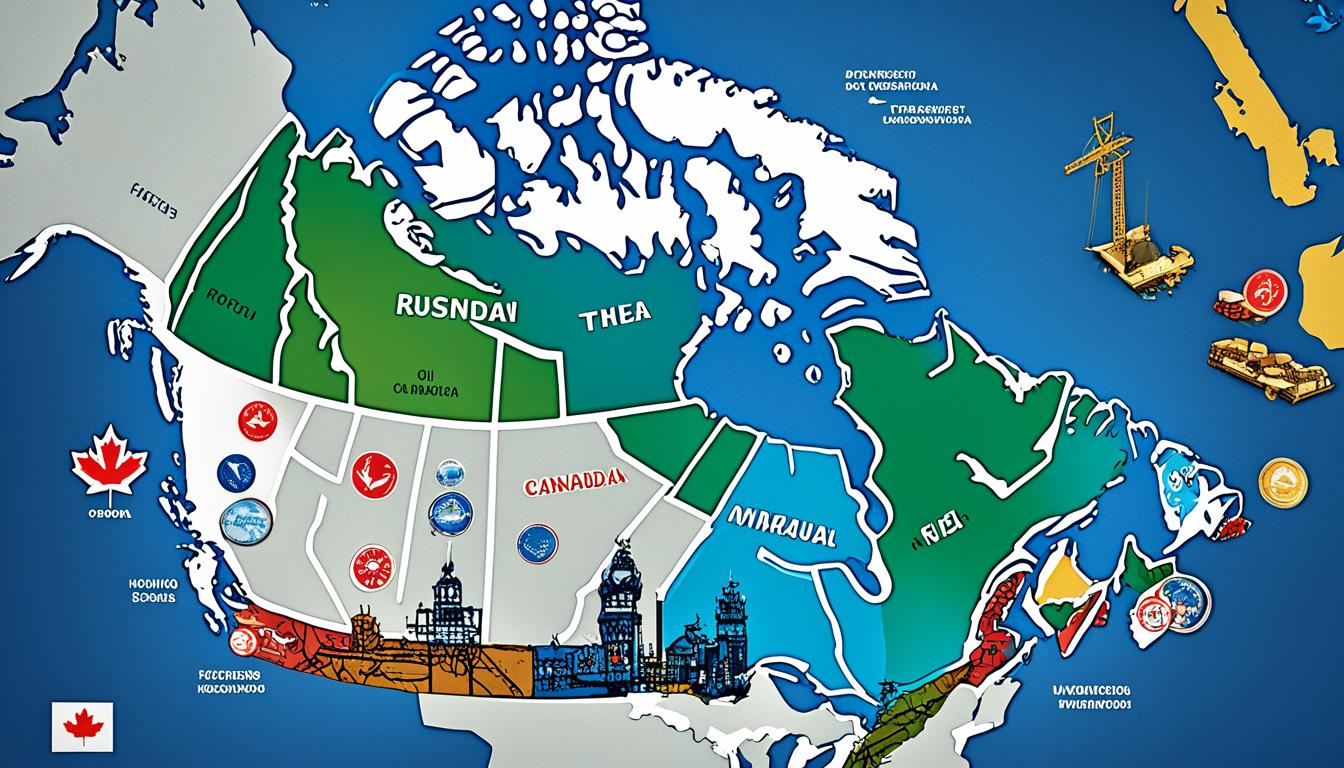In today’s globalized world, international trade plays a significant role in shaping the economies of nations. Countries engage in a constant flow of imports and exports, each contributing to their own economic growth and development. One such pair of countries involved in a diverse trade relationship is Canada and Russia. While these two nations may be located on opposite sides of the globe, their trade ties run deep. So, you may wonder what does Canada import from Russia. In this article, we will explore the top Russian exports that find their way into the Great White North, highlighting the economic significance and potential impact of these imports on Canada’s economy. Keep reading to discover the intriguing interplay between these two countries.
Overview of Canada’s Imports from Russia
Canada’s trade relationship with Russia has been a topic of ongoing interest, particularly as it pertains to the products and commodities that flow between the two countries. An analysis of the latest data reveals some intriguing insights into the trade balance and trends as well as the top imports and exports between Canada and Russia.
Trade Balance and Trends
In January 2022, Russia exported $56.7M and imported $105M from Canada, resulting in a negative trade balance of $48M. Between January 2021 and January 2022, Russia’s exports to Canada increased by $22.8M (67.4%) from $33.9M to $56.7M, while imports increased by $43.6M (71.4%) from $61.1M to $105M. This suggests a growing reliance on Russian imports to Canada and a potential widening of the trade deficit during this period.
Top Imports and Exports
An examination of the top products traded between the two nations reveals some interesting patterns. In January 2022, Russia’s leading exports to Canada included Nitrogenous Fertilizers ($13.1M), Coal Briquettes ($4.45M), Rubber Tires ($2.29M), Commodities not elsewhere specified ($2.21M), and Plywood ($1.84M). Conversely, Canada’s top imports from Russia during the same period were Commodities not elsewhere specified ($14.2M), Packaged Medicaments ($11.7M), Animal Food ($3.06M), Other Iron Products ($2.95M), and Other Agricultural Machinery ($1.57M).
Key Russian Exports to Canada
Canada’s trade relationship with Russia extends beyond the headlines, encompassing a diverse array of commodity exchanges. Among the prominent Russian exports to Canada, three key categories stand out: fertilizers and inorganic chemicals, ores, slag, and ash, as well as meat, fish, and seafood preparations.
1. Fertilizers and Inorganic Chemicals
Nitrogenous fertilizers have consistently been a leading Russian export to the Canadian market, accounting for a significant $13.1 million in trade value as of January 2022. These essential agricultural inputs play a crucial role in supporting Canada’s robust farming and food production sectors, underscoring the interdependence between the two nations’ trade in agricultural commodities.
2. Ores, Slag, and Ash
Russia’s exports of coal briquettes to Canada reached $4.45 million in January 2022, reflecting the continued demand for this essential energy source within the Canadian market. As the world navigates the evolving energy landscape, Canada’s imports of Russian coal remain an integral component of its diverse energy mix.
3. Meat, Fish, and Seafood Preparations
Beyond the heavy industrial and chemical sectors, Russia’s exports to Canada also include valued-added food products, such as plywood, which reached $1.84 million in January 2022. These specialized wood products cater to Canada’s manufacturing and construction industries, fostering economic ties between the two countries.
As the Canada-Russia trade relationship continues to evolve, understanding the key Russian exports to the Canadian market provides valuable insights into the depth and diversity of this commercial partnership.

What Does Canada Import From Russia?
As Canada’s trade relationship with Russia evolves, a closer examination of the products imported from the country reveals an interesting mix of industrial goods and natural resources. From machinery and aircraft parts to wood and wood products, Canada’s imports from Russia span a diverse range of sectors, reflecting the ongoing trade dynamics between the two nations.
1. Machinery and Industrial Products
Canada’s imports from Russia in the machinery and industrial products category include a variety of specialized equipment and components. In January 2022, the top imports in this sector were Commodities not elsewhere specified ($14.2M) and Other Iron Products ($2.95M), showcasing the diverse range of industrial goods flowing from Russia to the Canadian market.
2. Aircraft, Spacecraft, and Parts
Another significant import category from Russia to Canada is aircraft, spacecraft, and their associated parts. The data reveals that Other Agricultural Machinery ($1.57M) was a noteworthy import in this segment, underscoring the technological capabilities of Russian manufacturers and their ability to supply key components to the Canadian aerospace industry.
3. Wood and Wood Products
Canada’s reliance on Russian wood and wood products is also evident, with imports in this category contributing to the overall trade relationship. Plywood ($1.84M) was one of the top Russian exports to Canada in January 2022, demonstrating the importance of these natural resource-based goods in the bilateral trade landscape.
As Canada continues to navigate its trade partnerships, the diverse array of imports from Russia highlights the complex interplay of industrial, technological, and natural resource-based goods that shape the economic ties between the two countries.

Emerging Import Categories
As Canada’s trade relationship with Russia continues to evolve, certain emerging import categories are gaining prominence. According to the UN COMTRADE data, some of the notable emerging imports from Russia to Canada in 2023 included electrical and electronic equipment ($2.67M) as well as rubbers and plastics ($2.44M).
1. Electrical and Electronic Equipment
The imports of electrical and electronic equipment from Russia to Canada have seen a steady increase in recent years. This category encompasses a wide range of products, from advanced communication devices to industrial automation components. The growing demand for these Russian-sourced goods reflects Canada’s ongoing need to diversify its supply chains and access innovative technologies.
2. Rubbers and Plastics
Another emerging import category from Russia to Canada is rubbers and plastics, which reached $2.44M in 2023. This segment includes a diverse array of materials, from specialized industrial polymers to consumer-oriented plastic products. The Canadian market’s appetite for these Russian-supplied goods underscores the country’s commitment to sourcing cost-effective and high-quality materials to support its manufacturing and processing industries.

Regional Trade Patterns
Canada’s trade with Russia extends beyond just the products being exchanged, as the regional origins and destinations of these goods also play a significant role. In January 2022, the exports of Russia to Canada were mainly from NOVGOROD REGION ($15.9M), VOLOGDA REGION ($8.44M), STAVROPOL TERRITORY ($8.23M), SVERDLOVSK REGION ($6.58M), and LENINGRAD REGION ($3.03M). These regions, located across European Russia, highlight the geographical diversity of what products does russia export to canada?, russian exports to canada, and russia’s key exports to canada.
Origins of Russian Exports to Canada
The regions responsible for the majority of Russia’s exports to Canada in January 2022 provide insights into the domestic supply chains and production centers feeding canadian imports from russia and russian goods imported to canada. This geographic distribution suggests the breadth of russia-canada import trade and the importance of understanding regional trade patterns when examining what does canada import from russia.
Destinations of Canadian Imports in Russia
On the other side of the trade relationship, the main destinations for Canada’s imports in Russia in January 2022 were MOSCOW, THE CAPITAL OF RUSSIAN FEDERATION ($72.1M), REPUBLIC OF TATARSTAN ($11.6M), ST. PETERSBURG ($4.83M), MOSCOW REGION ($4.17M), and AMUR REGION ($1.94M). This highlights the regional diversity of what products do we import from russia?, russian products entering canadian market, and major russian imports to canada.
The disparate origins and destinations of trade between Canada and Russia illustrate the complex regional dynamics underlying canada-russia trade and russian commodities imported by canada. Understanding these regional trade patterns is crucial for businesses and policymakers seeking to navigate the nuances of this bilateral relationship.

Impact of Sanctions and Trade Restrictions
The imposition of sanctions and trade restrictions between Canada and Russia has had a significant impact on the flow of what products does russia export to canada?, what products do we import from russia?, russian exports to canada, and canada-russia trade. While the factual data provided does not contain specific details on the extent of this impact, it is clear that the geopolitical tensions have disrupted the russian commodities imported by canada and canadian imports from russia.
The russia’s key exports to canada, such as russian goods imported to canada and russian products entering canadian market, have likely faced increased scrutiny and barriers to entry. Similarly, major russian imports to canada from sectors like what does canada import from ukraine?, does canada import gas from russia?, and how much does canada rely on russian oil? have been affected by the evolving trade landscape.
The full extent of the impact of sanctions and trade restrictions on Canada’s trade relationship with Russia remains to be seen, as the situation continues to unfold. Businesses and policymakers will need to closely monitor does canada have more oil than saudi arabia?, who has the most untapped oil in the world?, how many years of oil is left in canada?, who has the biggest oil reserve in the world?, do we have 100 years of oil left?, does canada have more oil than the us?, and where in canada has the most oil? to navigate the evolving trade landscape and identify new opportunities or challenges.
Growth Opportunities and Challenges
As the trade relationship between Canada and Russia continues to evolve, there are both growth opportunities and challenges that merit exploration. The increase in Russia’s exports to Canada, particularly in sectors like Coal Briquettes, Radioactive Chemicals, and Kraft Paper, suggests potential areas for expanded trade. Conversely, the surge in Canadian imports from Russia in Packaged Medicaments, Commodities not elsewhere specified, and Other Iron Products points to emerging categories that warrant further analysis.
Sectors with Potential for Increased Trade
The data indicates that certain Russian industries, such as those producing coal briquettes, radioactive chemicals, and kraft paper, have experienced significant year-over-year growth in their exports to the Canadian market. This points to sectors that may hold promise for further trade expansion, as Canadian businesses seek to diversify their supply chains and access new sources of specialized products. Identifying and capitalizing on these growth opportunities could benefit both the Canadian and Russian economies.
Barriers to Trade Expansion
Despite the identified growth areas, the Canada-Russia trade relationship also faces potential barriers that may hinder further expansion. Factors such as geopolitical tensions, trade sanctions, and logistical challenges can create obstacles for businesses seeking to engage in cross-border commerce. Understanding and addressing these barriers will be crucial for Canadian importers and Russian exporters looking to capitalize on emerging trade opportunities.
Strategies for Canadian Businesses
As Canada’s trade relationship with Russia continues to evolve, Canadian businesses must explore strategic approaches to navigate the changing landscape. Two key areas of focus for Canadian companies are diversifying import sources and exploring alternative markets.
1. Diversifying Import Sources
Given the potential volatility and uncertainty surrounding trade with Russia, Canadian businesses should consider diversifying their import sources to mitigate risk and ensure a more stable supply chain. This may involve identifying and establishing relationships with suppliers in other countries, such as or other nations that can provide the necessary and . By diversifying their import portfolio, Canadian companies can reduce their reliance on a single market and enhance their resilience in the face of potential disruptions.
2. Exploring Alternative Markets
In addition to diversifying import sources, Canadian businesses should also explore alternative markets for their products and services. This may involve identifying new export destinations for expanding their reach beyond the traditional Russia-Canada trade relationship, Canadian companies can tap into new growth opportunities and reduce their dependence on a single market.
The key is for Canadian businesses to remain agile, adaptable, and proactive in their approach to international trade. By diversifying their import sources and exploring alternative markets, they can build a more resilient and sustainable business model that is better equipped to navigate the evolving and landscape.
Environmental and Social Considerations
As Canada continues to import a variety of what products does russia export to canada?, what products do we import from russia?, and russian goods imported to canada, it’s crucial to consider the environmental and social implications of these trade relationships. Sustainable trade practices that prioritize environmental protection and ethical labor standards are increasingly important factors for Canadian businesses and consumers.
1. Sustainable Trade Practices
Canadian importers of russian commodities imported by canada and major russian imports to canada should strive to partner with Russian suppliers that demonstrate a commitment to sustainable production methods. This may include adopting renewable energy sources, implementing waste reduction strategies, and adhering to international environmental standards. By prioritizing sustainable trade practices, Canadian businesses can positively contribute to global efforts to mitigate climate change and promote environmental stewardship.
2. Human Rights and Labor Standards
Alongside environmental considerations, the observance of human rights and labor standards in Russia’s production of what does canada import from russia and russia-canada import trade is of paramount importance. Canadian businesses should conduct thorough due diligence to ensure their Russian suppliers uphold fair labor practices, protect worker safety, and respect fundamental human rights. By prioritizing ethical sourcing, Canadian importers can champion social responsibility and contribute to the betterment of global supply chains.
Future Outlook and Projections
As Canada navigates the evolving landscape of trade relations with Russia, the future outlook for imports remains uncertain. The ongoing geopolitical tensions and sanctions have already impacted the flow of goods between the two countries, with a significant decline in trade volumes seen in recent years. However, industry experts suggest that certain sectors, such as those involving key Russian exports like fertilizers, ores, and wood products, may continue to maintain a level of demand in the Canadian market.
Looking ahead, the trajectory of Canada’s imports from Russia will likely depend on a complex interplay of factors, including the diplomatic relations between the two nations, the effectiveness and reach of international sanctions, and the ability of Canadian businesses to diversify their supply chains. While the current environment poses challenges, some industry analysts believe that selective trade opportunities may emerge in specific product categories, particularly if alternative sources prove difficult to secure or more expensive.
Ultimately, the future of Canada-Russia trade will hinge on the ability of policymakers and businesses to navigate the evolving geopolitical landscape, balance economic interests with ethical considerations, and explore innovative strategies to mitigate risks and capitalize on any potential trade openings. As the global economy continues to evolve, Canada’s approach to its import relationships will be a critical factor in maintaining a resilient and sustainable trade ecosystem.
FAQ
1. What products does Russia export to Canada?
According to the data, Russia’s top exports to Canada in January 2022 included Nitrogenous Fertilizers ($13.1M), Coal Briquettes ($4.45M), Rubber Tires ($2.29M), Commodities not elsewhere specified ($2.21M), and Plywood ($1.84M).
2. What products does Canada import from Russia?
In January 2022, Canada’s top imports from Russia were Commodities not elsewhere specified ($14.2M), Packaged Medicaments ($11.7M), Animal Food ($3.06M), Other Iron Products ($2.95M), and Other Agricultural Machinery ($1.57M).
3. What does Canada import from Ukraine?
The data provided does not contain specific information about Canada’s imports from Ukraine. More information would be needed to answer this question.
4. Does Canada import gas from Russia?
The data provided does not contain information about Canada’s imports of natural gas from Russia. More information would be needed to answer this question.
5. How much does Canada rely on Russian oil?
The data provided does not contain information about Canada’s reliance on Russian oil. More information would be needed to answer this question.




